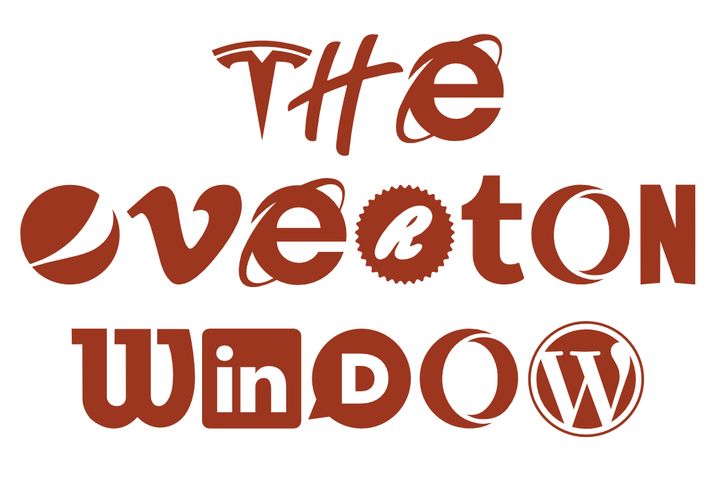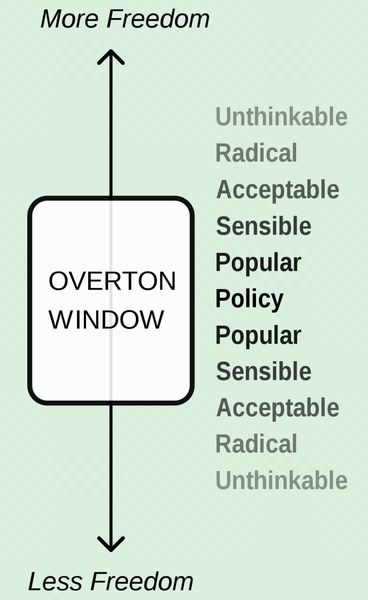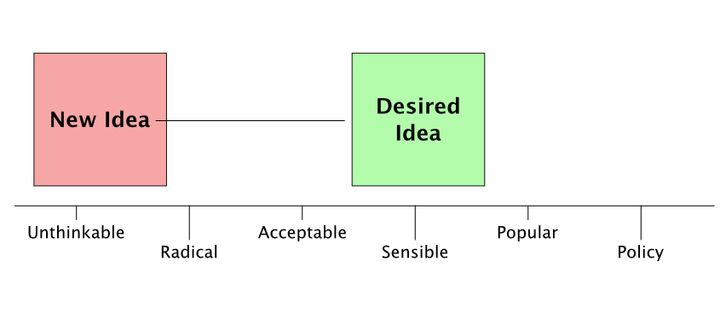
I just came across something called “the Overton window”, and realized it explains the struggles of 3D printing.
The Overton Window
The Overton window is a concept that attempts to explain why some things are considered normal and some not. Wikipedia defines it thusly:
“The Overton window is the range of policies politically acceptable to the mainstream population at a given time. It is also known as the window of discourse. The term is named after American policy analyst Joseph P. Overton, who stated that an idea’s political viability depends mainly on whether it falls within this range, rather than on politicians’ individual preferences. According to Overton, the window frames the range of policies that a politician can recommend without appearing too extreme to gain or keep public office given the climate of public opinion at that time.”
That sounds more like a political definition, so why would this have anything at all to do with 3D printing?
I believe it’s because the Overton window is in play in ANY topic or discipline. There are always concepts that are considered normal and accepted, and others that are “outrageous”.
How The Overton Window Works
Overton defined six “degrees of acceptance” of an idea:
- Unthinkable
- Radical
- Acceptable
- Sensible
- Popular
- Policy
As you can see, there is quite range of acceptance in these levels, and upon seeing them you can immediately think of concepts to fit into each. And those thoughts may not necessarily be traditionally political. They could be technical concepts as well.
Overton’s “window” is a scale through which a political idea may be placed:

This window concept also makes a great deal of sense. While for an individual a particular idea might land in a specific category, the aggregation of all those placements would cluster in the way Overton suggests.
3D Printing and the Overton Window
For 3D printing I believe this scale is highly relevant: when a business is faced with a proposal to use 3D printing, the answer is always one of the six categories.
At the beginning decades ago all 3D printing concepts fell into the “Unthinkable” category.
But now that’s changed.
In some companies additive manufacturing is “Policy”. In others they are merely “Sensible”. And, unfortunately, for many they are still “Unthinkable”.
The game for 3D printer manufacturers is clearly to identify those prospects that land in the “Acceptable” or “Sensible” categories and then convince them to move towards Policy.
This rating system can also be applied to sentiment towards 3D printing processes. I’ll give it a try here by guessing where the majority of the 3D printing community might rank some 3D printing processes for business use:
- Unthinkable — Volumetric
- Radical — AI controlled loop
- Acceptable — WAAM
- Sensible — Bioprinting
- Popular — DMLS
- Policy — FFF, SLA, SLS
A new 3D printing process would have to scale the Overton categories, one-by-one, to succeed in the market.

That’s extraordinarily difficult at the “Unthinkable” end of the spectrum, but would get easier as you move forward. A 3D printing process that’s popular would have significant visibility and thus many might be persuaded by actual demonstration to move it to Policy.
On the other hand, “Unthinkable” 3D printing processes would routinely be dismissed out of hand because their advantages and disadvantages might not be understood. New processes are often radically different from what people currently understand, and that can limit their perspective.
The Overton window is likely one of the several reasons why 3D print technology has taken so long to gain popularity in industry. It has to travel from Unthinkable all the way to Policy.
The next time you see a 3D print technology that you believe is unthinkable, take a pause and consider what you’re thinking. You might be wrong.
Via Wikipedia
